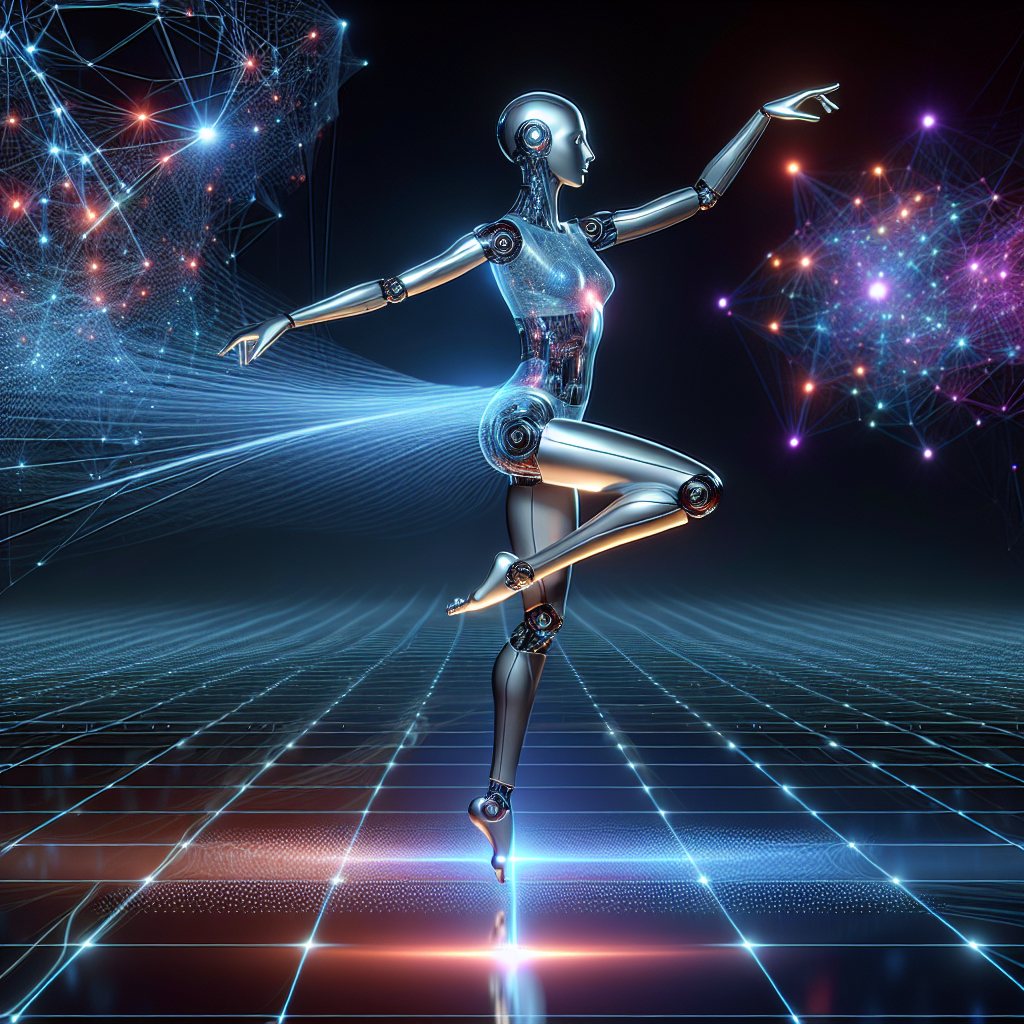AI and Dance: Exploring the Intersection of Technology and Movement
Dance has always been a deeply human form of expression, a way to communicate and connect with others through movement. But what happens when you introduce artificial intelligence (AI) into the mix? Can technology enhance the art of dance, or does it risk stripping away its humanity?
In recent years, the intersection of AI and dance has become a hot topic in the world of performing arts. From choreographing dances to analyzing movements, AI has the potential to revolutionize the way we think about and create dance. But with this potential comes a host of questions and concerns. How does AI impact the creative process? Can AI truly understand the nuances of human movement? And what does the future hold for the relationship between technology and dance?
Choreographing with AI
One of the most exciting applications of AI in dance is in the realm of choreography. Traditionally, choreography is a deeply personal and subjective process, with each dancer bringing their own unique style and interpretation to the movements. But with AI, choreographers have a new tool at their disposal to help generate and refine their choreography.
AI can analyze vast amounts of data on movement and choreography, from videos of dancers to historical dance archives. By feeding this data into algorithms, AI can generate new movement patterns and sequences that a human choreographer might not have thought of on their own. This can lead to new and innovative dance creations that push the boundaries of what is possible.
One example of this is the work of choreographer Wayne McGregor, who collaborated with Google’s AI research lab to create a piece called “Living Archive.” McGregor used AI to analyze his own choreographic style and generate new movements based on this analysis. The result was a mesmerizing dance piece that blended McGregor’s signature style with the creative input of AI.
Analyzing Movement
Another way AI is revolutionizing dance is through the analysis of movement. AI can track and analyze the movements of dancers in real time, providing valuable feedback on their technique and performance. This can be especially useful for dancers looking to improve their skills or for choreographers looking to refine their choreography.
For example, companies like DanceForms have developed AI-powered software that can analyze the movements of dancers and provide feedback on their technique. This can be a valuable tool for dancers looking to improve their performance or for choreographers looking to fine-tune their choreography.
AI can also be used to analyze the movements of large groups of dancers, providing insights into patterns and trends in dance. This can be useful for choreographers looking to create large-scale dance pieces or for researchers looking to study the evolution of dance over time.
The Future of AI and Dance
As AI continues to advance, the possibilities for its application in dance are endless. From creating immersive dance experiences to analyzing movement patterns, AI has the potential to revolutionize the way we think about and create dance. But with this potential comes a host of questions and concerns.
One of the main concerns surrounding the intersection of AI and dance is the impact on the creative process. Will AI replace human choreographers and dancers, or will it enhance their abilities? While AI can certainly generate new movement patterns and sequences, it lacks the emotional depth and intuition that human dancers bring to their performances. As such, it is unlikely that AI will ever completely replace human dancers in the world of dance. Instead, AI is more likely to be used as a tool to enhance and inspire human creativity.
Another concern is the potential for AI to perpetuate biases and stereotypes in dance. AI algorithms are only as good as the data they are trained on, and if this data is biased or limited in scope, the AI may produce biased or limited results. This can be especially concerning in an art form as diverse and inclusive as dance, where representation and diversity are key.
Despite these concerns, the future of AI and dance looks bright. As AI continues to advance, we can expect to see more collaborations between choreographers and AI researchers, leading to new and innovative dance creations. From choreographing dances to analyzing movements, AI has the potential to revolutionize the way we think about and create dance.
FAQs
Q: Can AI truly understand the nuances of human movement?
A: While AI can analyze movement patterns and generate new sequences, it lacks the emotional depth and intuition that human dancers bring to their performances. As such, AI is more likely to be used as a tool to enhance and inspire human creativity rather than replace it entirely.
Q: How does AI impact the creative process in dance?
A: AI can be a valuable tool for choreographers looking to generate new movement patterns and sequences. By analyzing vast amounts of data on movement and choreography, AI can help choreographers push the boundaries of what is possible in dance.
Q: What are some examples of AI in dance?
A: Choreographer Wayne McGregor collaborated with Google’s AI research lab to create a piece called “Living Archive,” in which AI analyzed McGregor’s choreographic style and generated new movements based on this analysis. Companies like DanceForms have also developed AI-powered software to analyze the movements of dancers and provide feedback on their technique.
Q: How can AI be used to analyze movement in dance?
A: AI can track and analyze the movements of dancers in real time, providing valuable feedback on their technique and performance. This can be useful for dancers looking to improve their skills or for choreographers looking to refine their choreography.

